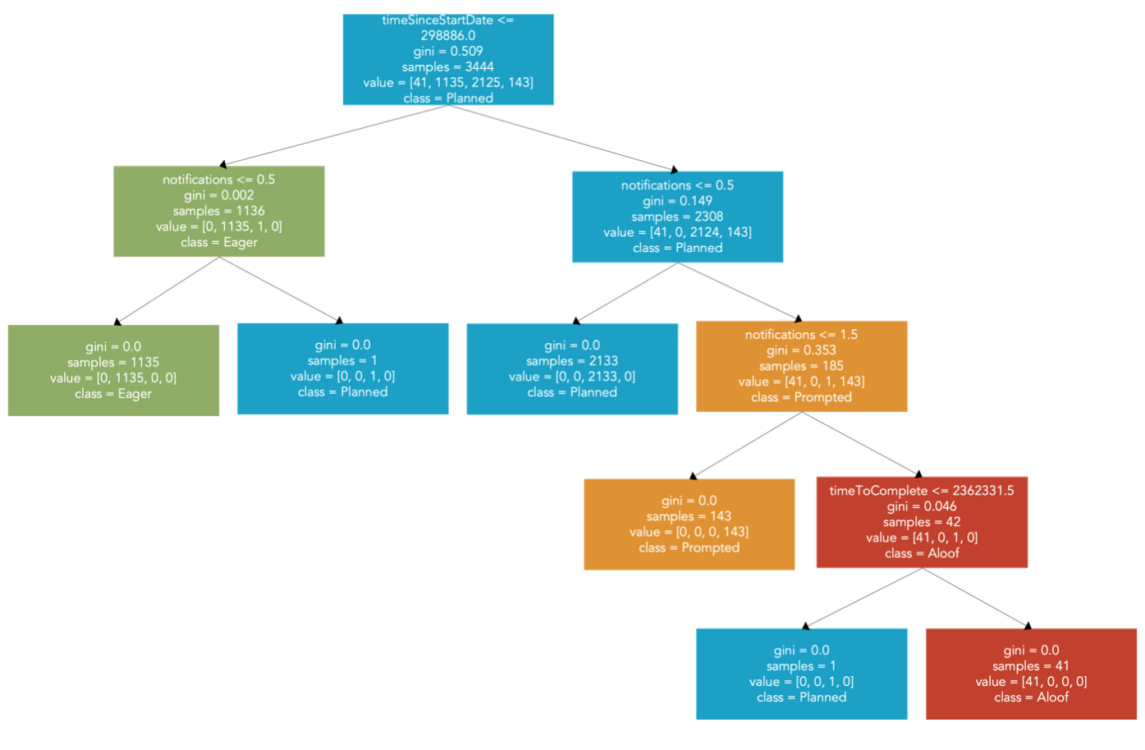How Artificial Intelligence and Analytics are transforming digital learning
May 19, 2022
If your business has considered exploring Artificial Intelligence (AI) capabilities in 2022, then you are not alone. Covid-19 has driven an unprecedented adoption of AI for use within business. A recent survey conducted by PWC showed that 86% of participating companies feel that AI is becoming a ”mainstream technology”, with 52% accelerating their adoption plans during the pandemic. A further 74% of companies felt that AI would deliver more efficient business processes and create new business models, products, and services. It is no surprise that the majority of surveyed business leaders feel positive about the role AI will play in the future and that the rate of adoption is expected to rise.
The digital learning platform market has seen a similar Covid-fuelled surge, with more businesses adopting new technologies or using existing infrastructure to try and cater for increased demand. The results have been mixed for many organisations, with some surveys revealing that as few as 20% of university students were satisfied with the online learning available to them.
AI can help bridge the gap
While organisations look to offer an increasing proportion of digital learning experiences, several barriers continue to impact the effectiveness, such as organisational culture and employee behaviour challenges – the very same issues that many encountered before Covid.
Learning and development teams can spend a tremendous amount of time and effort trying to understand how effective their learning offerings are and what part certain technologies play. Artificial Intelligence can play an integral role within the modern learning eco-system. By collecting data and utilising artificial intelligence to identify meaningful insights, the overheads in calculating learning efficacy can be reduced.
Rich Data & Analytics: the key to unlocking AI
Traditional reporting metrics (such as completions and quiz scores) only provide face-value insights into what is occurring. A more in-depth representation of the learner experience is required to discover the complex interactions, behaviours, learning styles, and trends contained therein.
Unlike traditional methods such as LMS and SCORM, xAPI provides data granularity and detail that has not been previously accessible. By normalising the streams of intricate data that flow from xAPI, learning data can be presented in a uniform format that is ideal for reporting and more importantly, can be fed into powerful AI algorithms.
Practical examples of xAPI data and AI working together
Developing Intelligent Learner Classifications
Learner classifications, or learner profiles, categorise learners into quadrants based on their unique history of learning activity participation and completion. This can be applied across a wide range of curriculum types and is commonly applied to mandatory digital learning. By analysing a learner’s behaviour and approach to completing assigned learning, the business is able to inform decision-makers about how to better engage their learners, alter their approach to training, or make amendments to content.
Common classification quadrants are:
- Eager learners – complete everything ASAP
- Planned Learners – don’t need as much prompting and get it done
- Prompted learners – need a lot of prodding
- Aloof learners – ignore communication and miss their deadlines
To determine who fits into each category, normalised xAPI data is fed into an AI model known as a decision tree classifier. This can automate the process of categorisation across millions of xAPI statements or records without the huge manual labour required to do this by hand.
Figure 1 – Decision tree algorithm

This type of analysis allows L&D teams to compare the learner profiles with other factors such as type of training, learner roles, and learner locations. These comparisons can assist in determining future courses of action, including:
- Customising learning content for different learner profiles, i.e. reporting may reveal that planned learners are more responsive to video content, thus content can be adapted as appropriate.
- Creating dynamic learning pathways based on profile, i.e. send additional notifications to Aloof Learners to ensure they reach the next stage.
- Configuring rewards and recognition for completing training within timeframes, encouraging Aloof and Prompted learners to participate earlier.
Measuring & Interpreting Learner Sentiment
With social posts, or indeed any format of open text, the overheads of reading, managing and moderating are often so laborious that these activities are often overlooked or used as an adjunct to other learning content. AI algorithms such as random forests and gradient descent can provide insights into these posts, determining the level of authoring effort (low, medium or high) and the tone of the post (negative, neutral or positive).
When presented as reports or as visual dashboards, the results of applying the algorithm to data can quickly reveal how an activity is tracking and how learners are responding.
This information can be interpreted in several ways to assist in decision making and to delve into analysis of user groups, content, and entire learning activities.
Figure 2 – ClearXP’s Social Sentiment dashboard

By examining the tone of posts, filters can be applied very effectively to ease moderation and management of social learning. Additionally, it can provide illuminating contextual information when applied to ratings, reviews, and comments regarding learning. The time saved and information gained can make a drastic difference in understanding learning effectiveness, how learners are feeling, their experiences, and their participation.
Other Potential Applications
This article only scratches the surface of the potential usage of xAPI data combined with Artificial Intelligence. Further use cases include:
- Creating dynamic, tailored learning journeys based on learner profile.
- Applying natural language processing to assessment responses to determine tone, topic, keywords, and other factors that contribute to successful outcomes.
- AI-driven prompts for content creators suggesting learning elements to avoid or include based on past learner behaviours.
If you have any other use cases then let us know. At ClearXP we are constantly innovating and leveraging xAPI and AI. Get in touch to discuss how it can start to benefit you.

